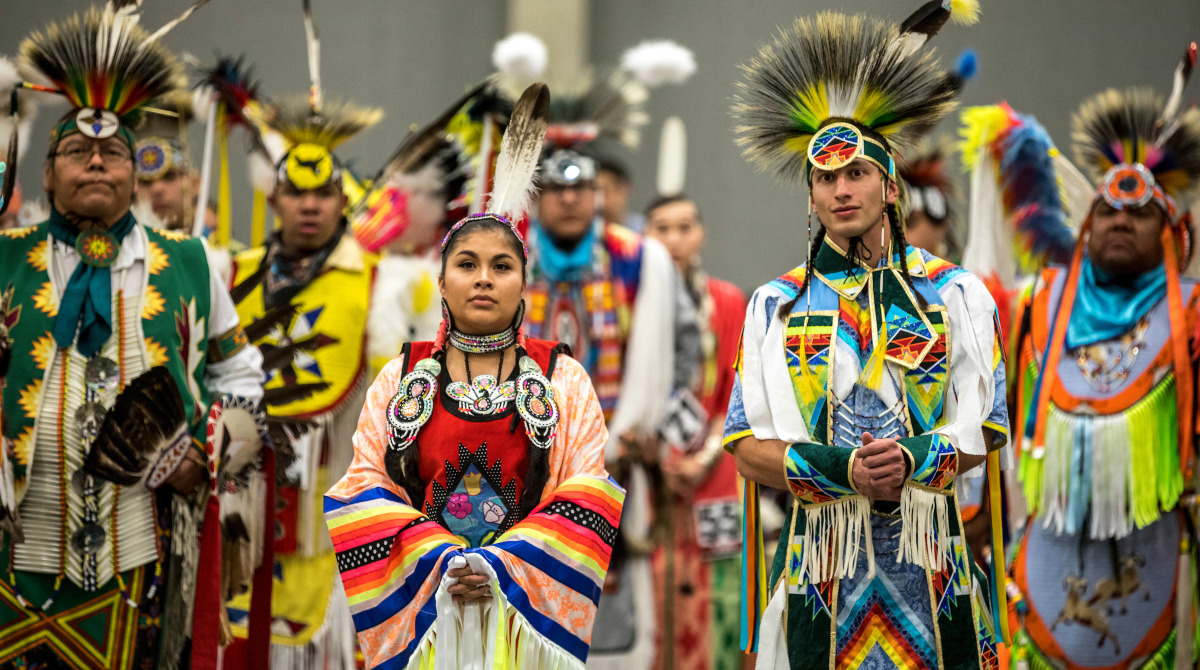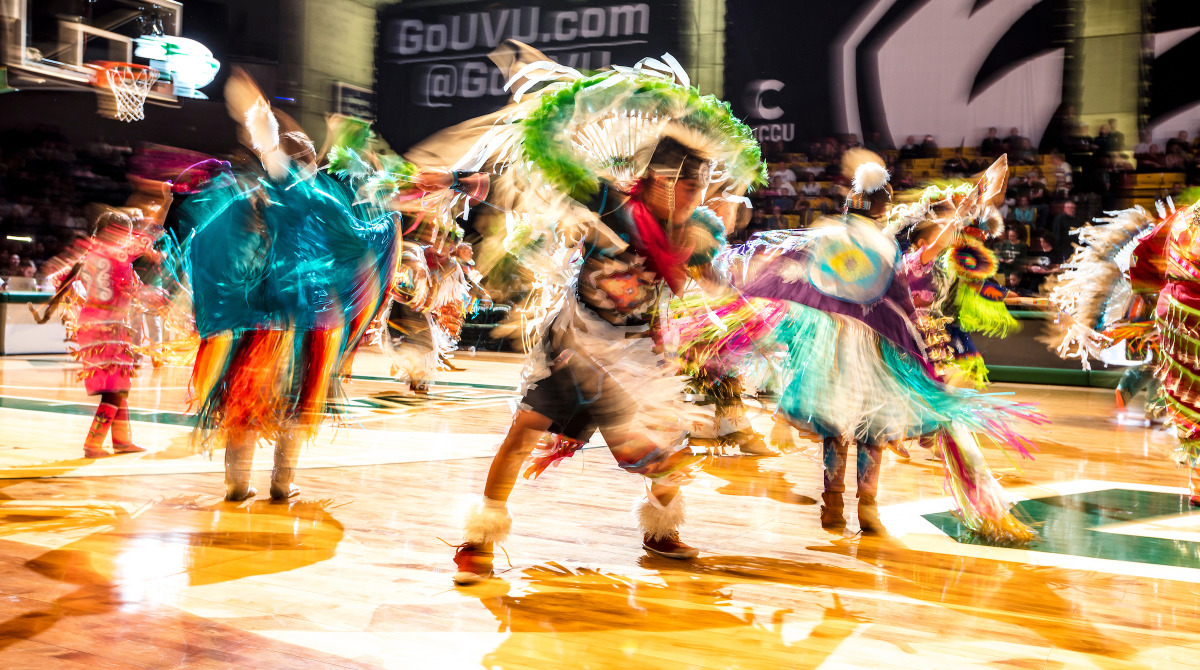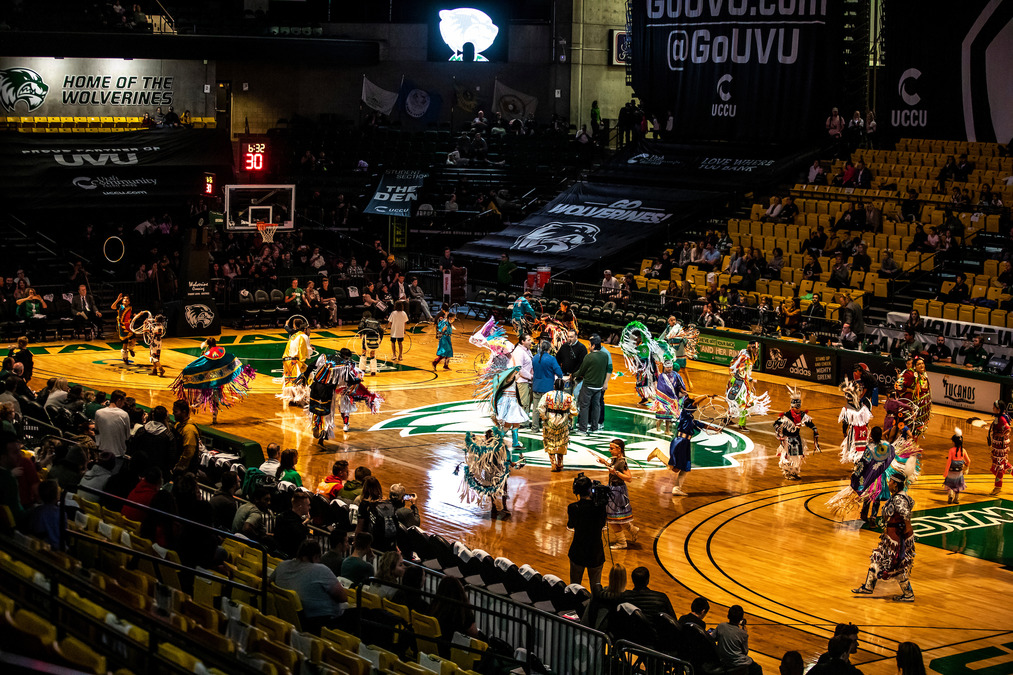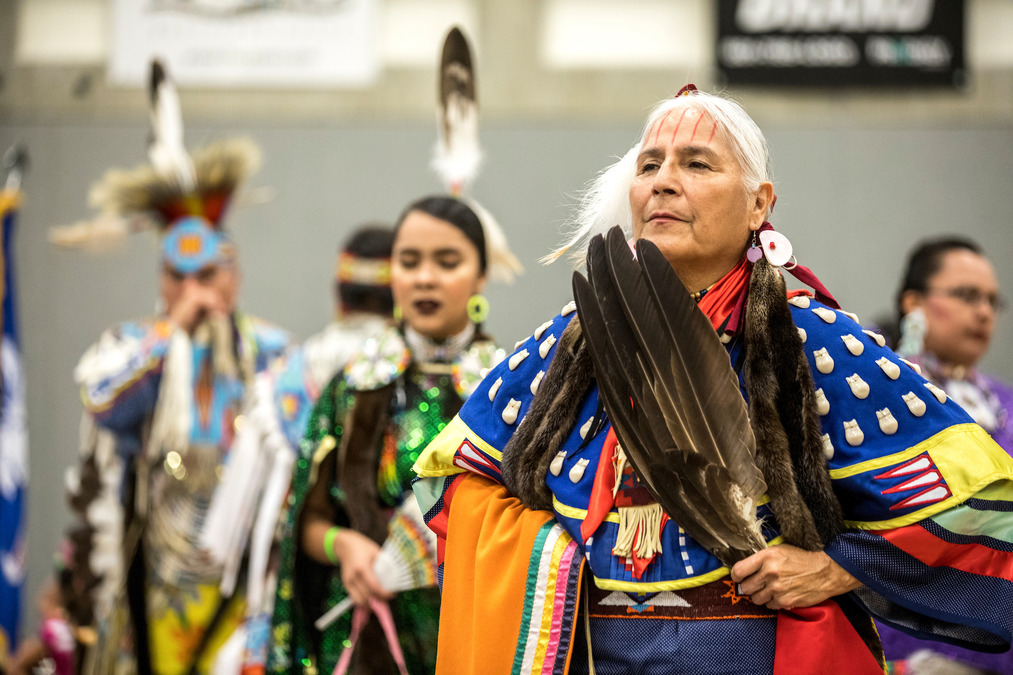The Native American Initiative at UVU provides rich cultural experiences, resources, and programs for our Native American students. We serve the Indigenous people of Utah Valley and our broader Native community by providing education and support and celebrating Native cultures.

Celebrating Utah’s Native Peoples and History
November is Native American Heritage Month, and Utah Valley University is celebrating the rich cultures and stories of Utah's Indigenous peoples. The United States was settled on Native lands belonging to hundreds of Indigenous tribes, and Utah is no exception. UVU occupies the traditional territory of the Ute tribe. Utah was named after the Ute, but white settlement and colonization displaced them and other Native peoples in the region.
UVU is dedicated to serving and honoring the Indigenous peoples of UVU and our broader community. Our Native Wolverines bring a vast range of rich cultures to the university, and we are honored to learn more about their histories and traditions. This Native American Heritage Month, we encourage you to honor Native and Indigenous history by learning more about the sovereign tribes located in Utah.
Utah’s Native Peoples
Utah is home to around 60,000 Native Americans from over 50 tribal nations. These include Utah’s eight federally recognized tribes from five main cultures: the Navajo Nation, the Ute Indian Tribe of the Uintah and Ouray Reservation, the Ute Mountain Ute Tribe, Northwestern Band of Shoshone Nation, the Confederated Tribes of Goshute, the Skull Valley Band of Goshute, the Paiute Indian Tribe of Utah, and the San Juan Southern Paiute Tribe.
As we honor our state’s and nation’s Indigenous history, we must be responsible for learning about the traditional stewards of the land on which we live and work. This includes recognizing the unique identities and cultures of Utah’s Indigenous groups and how they understand themselves. By doing this, we can form deeper, more complex relationships with the Indigenous people in our community and expand our relationship with the land on which we live.
Navajo
The Navajo Nation is the largest federally recognized tribe in the U.S., with nearly 400,000 enrolled members. Most of the Navajo Nation’s land is in Arizona, with the north and east portions extending into Utah and New Mexico, respectively. The Navajo were hunters and gatherers in the region before adopting the Pueblo people’s farming practices.
In the Navajo language, tribal members refer to themselves as the Diné. Just as the Navajo Nation is the largest in the U.S., the Navajo language is one of the most widespread Native languages in the country, with close to 170,000 native speakers as of 2011.
Ute
While the state of Utah was named after the Ute people, the word Ute is most likely derived from the term Yuta, a term used by the Spanish in the 17th century. The Utes call themselves Núuchi-u, or “the people.” Before the region was colonized, Utes were hunters and gatherers with traditional hunting grounds in Utah and Colorado, as well as areas in Wyoming, Oklahoma, Arizona, and New Mexico.
Today, there are two federally recognized Ute tribes in Utah. The Uintah and Ouray Indian Reservation is the second-largest reservation in the U.S. by land area. The White Mesa Community of Utah is part of the Ute Mountain Ute Tribe but has its own administration and culture.
Shoshone
The Shoshone are closely related to many other Native groups from Utah, including the Ute, Goshute, and Paiute tribes. The Northwestern Band of Shoshone traveled across Utah, Wyoming, and Idaho as the seasons changed. Today, the Northwestern Shoshone have a reservation in northern Utah.
The name Shoshone comes from the Shoshoni word sosoni, or high-growing grasses. The words Newe or Neme (“people”) and the phrase So-so-goi (“those who travel on foot”) were also used. Today, there are roughly 1,000 Shoshoni speakers.
Goshute
The Goshute’s traditional territory is in Nevada and Utah, and the tribe is part of the larger Shoshonean groups in the region. The Gosiute dialect of Shoshoni also uses the word Newe to describe the Goshute.
There are two reservations for the Goshute today. The Confederated Tribes of Goshute is on the Utah-Nevada border, while a smaller reservation in Tooele County is home to the Skull Valley Band of Goshute.
Paiute
The term “Paiute” describes three separate Indigenous groups from the Great Basin region. Utah’s Paiute peoples once lived in what is now Utah, Nevada, and Arizona. The Paiute Indian Tribe of Utah is a confederation of five bands with land parcels scattered across southwestern Utah.
Some Paiute groups were not always recognized as individual cultures. The lands of the San Juan Southern Paiute Tribe were annexed into the Navajo Nation. The tribe was only federally recognized in 1989.
About the Native American Initiative
The Native American Initiative at UVU provides rich cultural experiences, resources, and programs for our Native American students. We serve the Indigenous people of Utah Valley and our broader Native community by providing education and support and celebrating Native cultures.


